Kuroda Seiki (1866–1924) fundamentally transformed Japanese art by introducing Western painting techniques (yōga) during the Meiji era. Educated in Paris under Raphaël Collin, he mastered academic methods and plein-air Impressionism before returning to Japan to reform art education at the Tokyo School of Fine Arts. His pivotal works, Morning Toilette (1893), Maiko (1893), Lakeside (1897), Wisdom, Impression, Sentiment (1900), and Lilies (1909), exemplify “Academic Impressionism,” harmonizing European light and color with Japanese themes. As co-founder of the Hakuba-kai (White Horse Society) and the first yōga court painter, Kuroda’s teaching and exhibitions cemented Western-style painting in Japan. His legacy endures in the generations of artists he trained and in the ongoing celebration of yōga in Japanese cultural institutions.
Kuroda Shintarō was born on August 9, 1866, in Kagoshima Prefecture to a samurai family and was later adopted by his uncle, Kuroda Kiyotsuna, a high-ranking Meiji official (National Diet Library). Though he initially studied law, a chance encounter at the Japanese Legation in Paris in 1886 with fellow artists Yamamoto Hōsui, Fuji Masazō, and dealer Tadamasa Hayashi convinced him to devote himself to painting (Wikipedia).
In May 1886, Kuroda enrolled at the Académie Colarossi under Raphaël Collin and received supplementary guidance from Pierre Puvis de Chavannes (Wikipedia). There, he trained in academic draftsmanship and anatomy while discovering plein-air techniques at the artists’ colony of Grez-sur-Loing alongside compatriot Kume Keiichirō (Wikipedia). Between 1886 and 1893, he refined a style that combined rigorous studio practice with the Impressionist emphasis on natural light and color.
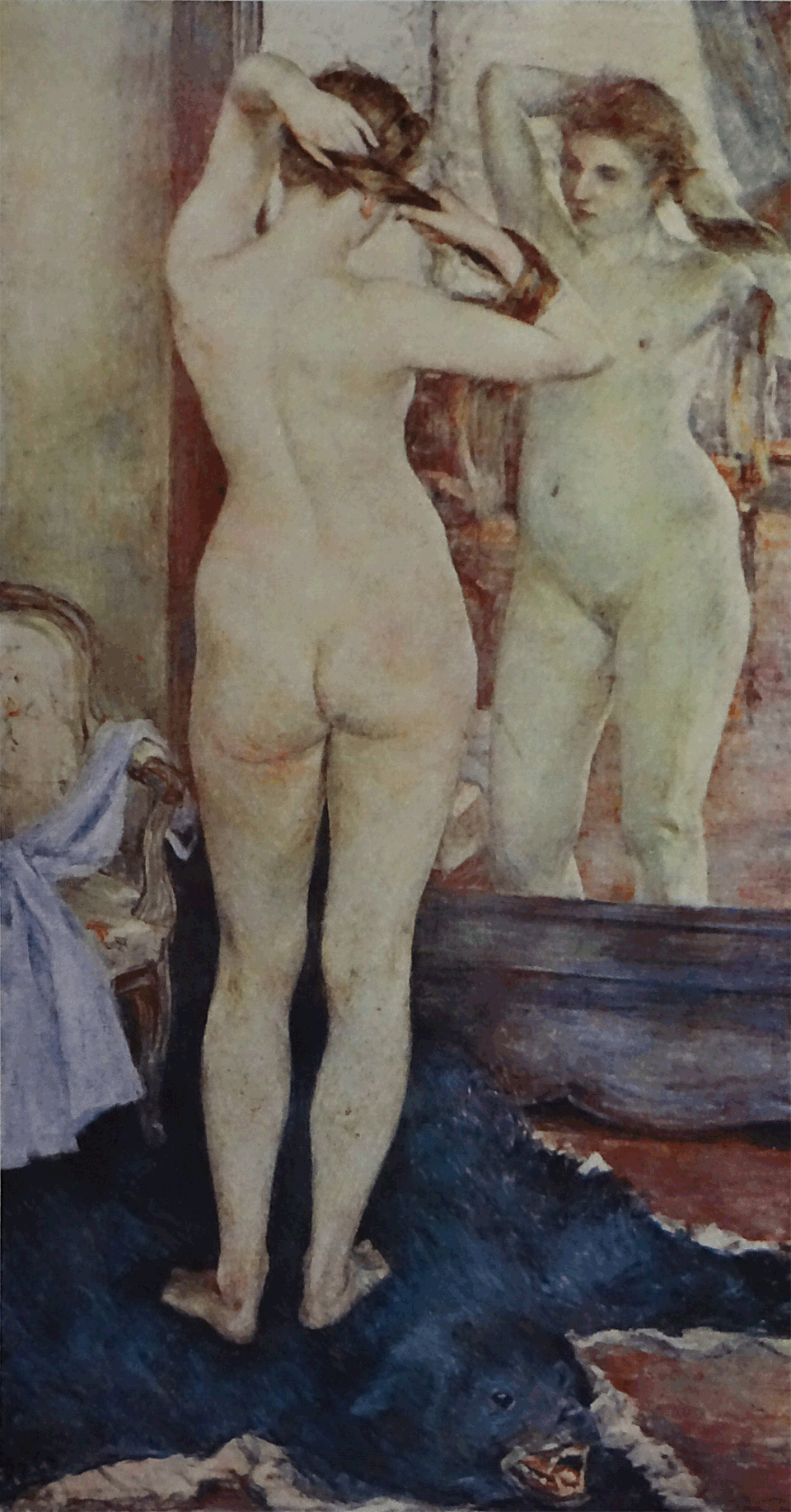
Kuroda’s Morning Toilette (1893), the first nude painting publicly exhibited in Japan, caused both acclaim and scandal. Accepted by the Salon Nationale de Beaux-Arts, it was intended to challenge Japanese taboos against the nude by showcasing the work upon his return to Tokyo (Skim607). Though lost in World War II air raids, surviving preparatory studies and contemporary accounts attest to its compositional sophistication and thematic boldness.
Appointed director of the Western Painting Department in May 1896 by Okakura Tenshin, Kuroda overhauled the curriculum at Tokyo Bijutsu Gakkō (now Tokyo University of the Arts), introducing live-model drawing, anatomy courses, and outdoor painting workshops (Wikipedia). He emphasized history painting as the highest form of artistic expression, believing works on mythic and historical themes held the greatest social value, and taught the use of charcoal and oil sketches in preparatory studies.

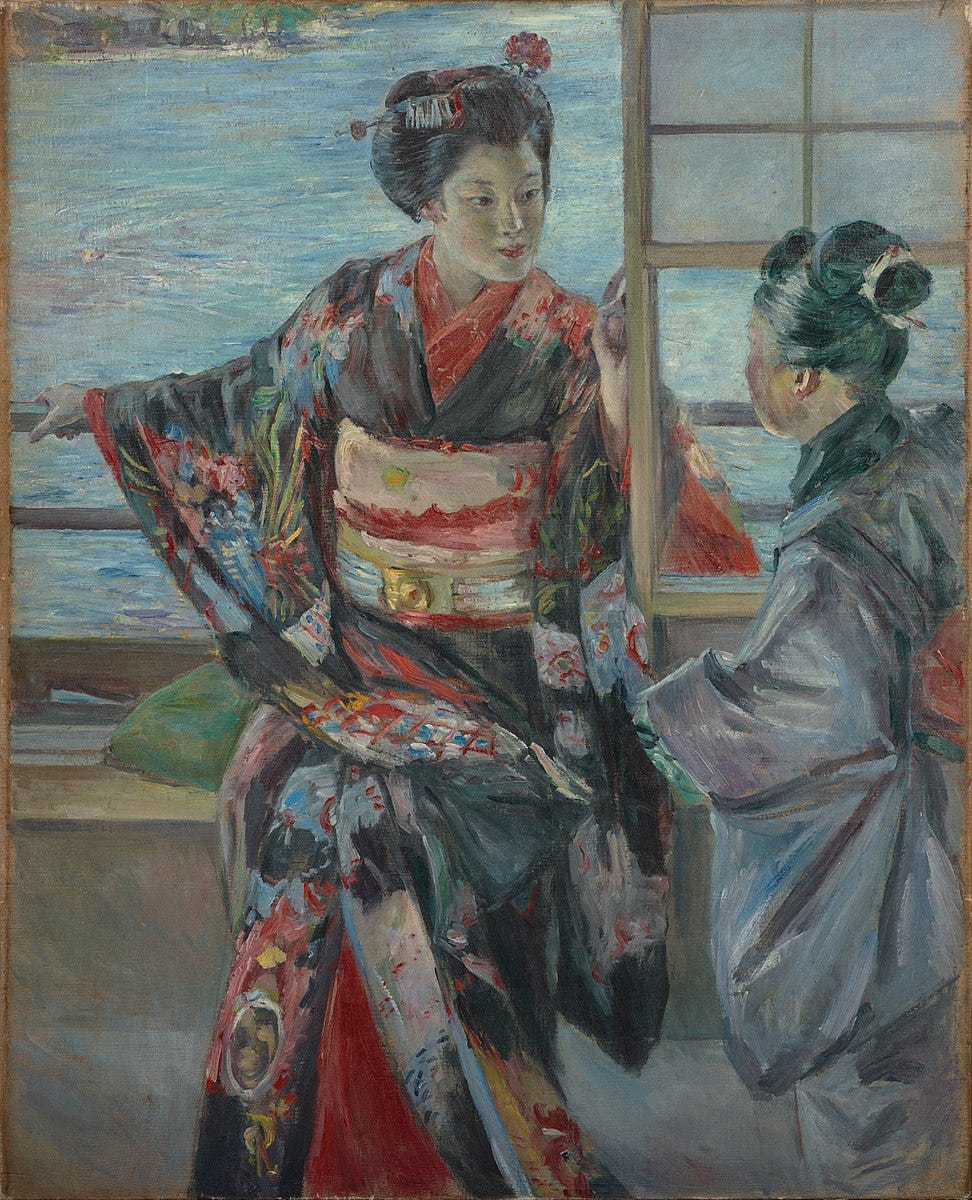
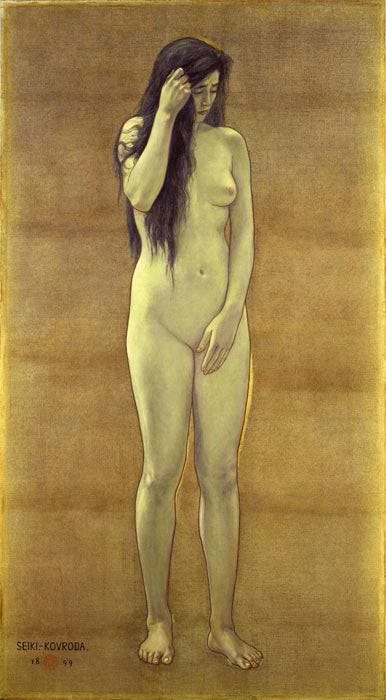
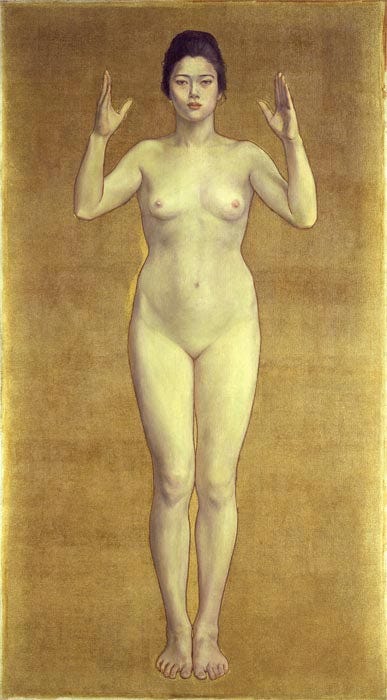
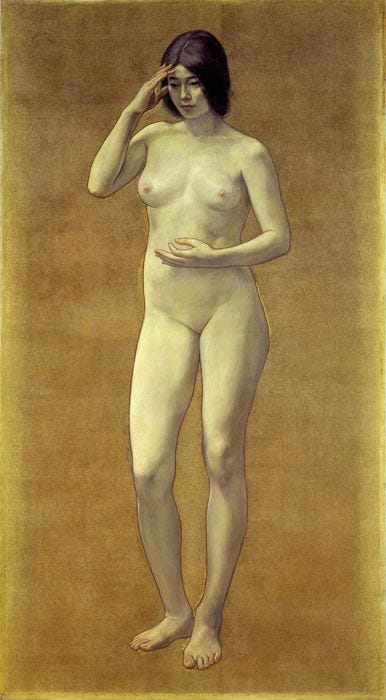
Chinghsin Wu terms Kuroda’s fusion of academic precision and Impressionist light as “Academic Impressionism” (Wikipedia). In Lakeside (1897), held by the Tokyo National Museum, his wife Teruko reclines by a Hakone lake under softly diffused sunlight, exemplifying harmony of form and light (National Treasures Museum). Maiko (1893), in the Tokyo National Museum’s collection, applies plein-air methods to depict an apprentice geisha in natural surroundings (The Art Story). His allegorical triptych Wisdom, Impression, Sentiment (1900) won a silver medal at the Paris Exposition Universelle, highlighting his command of narrative and composition.
In June 1896, Kuroda co-founded the Hakuba-kai (White Horse Society) alongside Kume Keiichirō and others, staging thirteen exhibitions by 1911 to showcase yōga outside state control and to foster stylistic debate (Wikipedia). He also exhibited at the first Bunten (1907) and in 1910 was appointed the Imperial Household’s first yōga painter. Ennobled as a viscount in 1917 and later serving in the House of Peers, he influenced cultural policy until his death on July 15, 1924 (Wikipedia, National Diet Library).
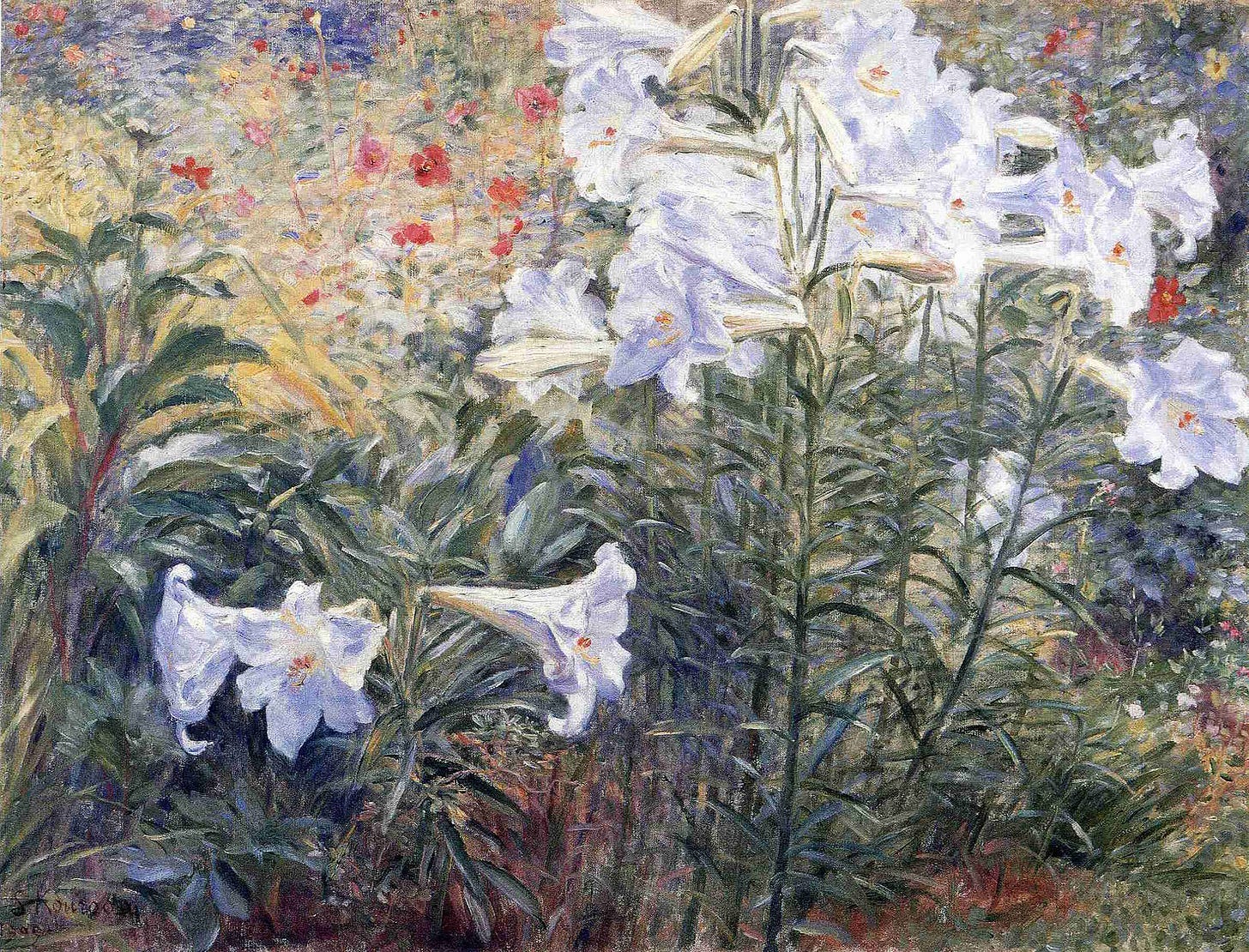
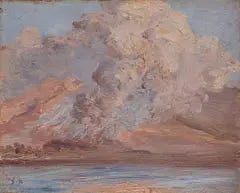
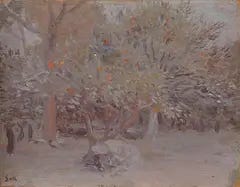
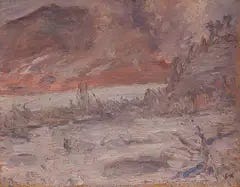
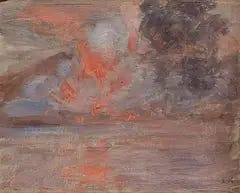
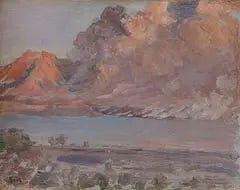
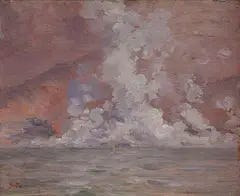
Kuroda’s pedagogical reforms produced a generation of leading yōga artists, Wada Eisaku, Asai Chū, and others, many of whom studied in Paris and furthered cross-cultural exchange (Wikipedia). His works Easter Lilies (1909) and the Sakurajima series (1914) remain cultural icons and have been commemorated on Japanese postage stamps in 1967 and 1980 (Wikipedia, National Diet Library). Institutions such as the Kuroda Seiki Memorial Hall and retrospectives at the Tokyo National Museum continue to celebrate his contributions, underscoring his title as “the father of Western-style painting” in Japan.
References:
Kuroda Seiki. Wikipedia, Wikimedia Foundation, 2025, en.wikipedia.org/wiki/Kuroda_Seiki. (Wikipedia)
Morning Toilette朝妝 · Acceptance and Reinterpretation, skim607.omeka.net/items/show/83. (Skim607)
Hakuba-kai. Wikipedia, Wikimedia Foundation, 2021, en.wikipedia.org/wiki/Hakuba-kai. (Wikipedia)
Yōga Movement Overview. The Art Story, www.theartstory.org/movement/yoga-western-style-japanese-painting. (The Art Story)
Kuroda Seiki | Portraits of Modern Japanese Historical Figures. National Diet Library, www.ndl.go.jp/portrait/e/datas/265.html. (National Diet Library)
Lakeside. Tokyo National Museum e-Museum, emuseum.nich.go.jp/detail?content_base_id=100623&langId=en. (National Treasures Museum)
Kuroda Seiki Memorial Hall. Tōhō Bunka Kenkyūjo (Tobunken), www.tobunken.go.jp/kuroda/index_e.html.
Wu, Chinghsin. Mapping Impressionist Painting in Transnational Contexts. Routledge, 2021.
McDonald, Aya Louisa. Kuroda, Seiki. Grove Art Online, Oxford University Press, 2024.
MutualArt. Kuroda Seiki’s Morning Toilette on Exhibition in Modern Kyoto. mutualart.com/Article/Kuroda-Seiki-s-Morning-Toilette-on-Exhib/0583CF885CD48B8C. (mutualart.com)




This is a beautifully written piece with gorgeous featured art. It’s a shame our culture is slipping away from sophistication enough to appreciate what’s happening here rather than be so busy censoring art. The geisha’s in natural environments are what push my awareness of using the impressionist technique on traditional subject matter.
It's like 'fusion' In music, isn't it? Very interesting to see and understand. I think the reason I still react against it is to do with cultural hegemony, I'm still horrified by the British legacy of colonialism and also missionary activity; all those contexts where a culture was told that they were inferior and wrong, often with resulting apologetics and trying to prove they were equally worthy on their oppressor's terms. What's interesting about Japan, however (and I'm no expert on its history), is that my sense is that it's unlikely that the Japanese ever allowed any country or culture to make them feel inferior! The Japanese have always been supremely secure in their cultural identity.... So you're forcing me to look at this with fresh eyes. Though I personally still prefer the woodcut in @@LaMonica's note!